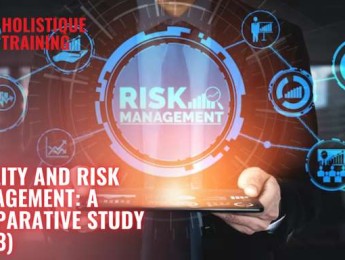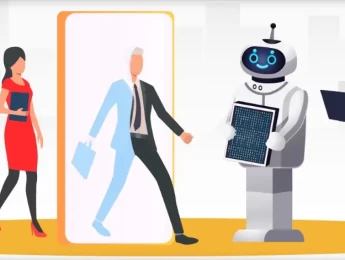- Table of Contents
- Introduction
- What Is Quality Management?
- Why Is Quality Management Important?
- Customer Satisfaction and Loyalty
- Operational Efficiency
- Brand Reputation and Differentiation
- Regulatory Compliance
- Continuous Improvement Culture
- Reduced Costs and Increased Efficiency
- Employee Morale and Engagement
- What Is Risk Management?
- Benefits of Risk Management
- Enhanced Decision-Making
- Proactive Approach to Uncertainties
- Stakeholder Confidence and Trust
- Optimised Resource Allocation
- Innovation and Agility
- Compliance and Legal Safeguarding
- Long-Term Sustainability
- Ways to Measure the Success of a Risk Management Programme
- 1- Reduction in Risk Occurrences
- 2- Financial Impact Mitigation
- 3- Improved Compliance Levels
- 4- Stakeholder Satisfaction and Confidence
- 5- Response and Recovery Time
- 6- Adaptability to Emerging Risks
- 7- Reduction in Insurance Costs
- 8- Minimisation of Reputational Damage
- Quality Management & Risk Management in Modern Context
- Technological Advancements and Quality Management
- Globalisation and Quality Standards
- Evolving Customer Expectations and Quality Assurance
- Cybersecurity and Risk Management
- Supply Chain Complexity and Risk Mitigation
- How Are Quality Management & Risk Management Aligned?
- Shared Focus on Prevention
- Continuous Improvement
- Customer-Centric Approach
- Data-Driven Decision Making
- Integration of Processes
- Common Objective of Organisational Resilience
- How Should the Quality and Risk Management Process Be Implemented?
- 1- Leadership Commitment
- 2- Cross-Functional Team
- 3- Define Objectives and Scope
- 4- Identify Risks and Quality Standards
- 5- Risk Assessment and Prioritisation
- 6- Quality Improvement Initiatives
- 7- Risk Mitigation Strategies
- 8- Monitoring and Measurement
- 9- Communication and Training
- 10- Feedback and Improvement
- 11- Integration and Collaboration
- 12- Documentation and Reporting
- 13- Adaptation to Changes
- 14- Certifications and Standards
- Conclusion
Introduction
Quality Management and Risk Management are two pivotal elements in the realm of organisational efficiency and resilience. In a world where businesses are constantly evolving, it's imperative to understand and implement these concepts effectively. They serve as the linchpin upon which a company's success, customer satisfaction, and long-term sustainability hinge. In this fast-paced and competitive business landscape, the synergy between Quality Management and Risk Management is more critical than ever. They not only ensure that your products or services meet the high standards expected by your customers but also shield your organisation from potential disruptions and uncertainties.
This blog post is a comprehensive exploration of the multifaceted world of Quality Management and Risk Management. It takes you on a journey from understanding the core definitions of these concepts to comprehending their profound significance in today's business environment. We will examine how these two disciplines align and complement each other, resulting in a harmonious approach to addressing the challenges and opportunities that organisations encounter. Furthermore, we will delve into the practical aspects of implementing effective Quality and Risk Management processes, providing you with actionable insights that can shape the way your organisation operates.
What Is Quality Management?
Quality Management is a comprehensive approach used by organisations to ensure that their products or services meet established quality standards and customer expectations. It involves processes and activities that monitor, measure, and improve the quality of products and services. Quality Management is not just about meeting minimum requirements; it's about consistently striving for excellence.
Table 1: Key quality management methodologies
Methodology | Description | Application Areas |
Six Sigma | Data-driven approach to eliminate defects | Manufacturing, Services, Healthcare |
Lean | Focus on efficiency, minimising waste | Manufacturing, Process Improvement |
Total Quality Management (TQM) | Holistic approach to quality and customer satisfaction | Various Industries |
ISO 9001 | International quality management standard | Global Organisations |
Kaizen | Continuous improvement through small, incremental changes | Manufacturing, Services |
Why Is Quality Management Important?
Quality Management serves as the cornerstone of organisational success, shaping the way products and services are delivered and perceived in the market. Its importance transcends mere adherence to standards; it embodies the essence of customer satisfaction, operational efficiency, and brand reputation.
Customer Satisfaction and Loyalty
At the heart of Quality Management lies the fundamental principle of meeting and exceeding customer expectations. When products or services consistently meet high-quality standards, customers are not just satisfied; they become loyal advocates for the brand. Customer loyalty translates into repeat business, positive reviews, and recommendations, amplifying the company's reputation in the market.
Operational Efficiency
A robust Quality Management system streamlines processes and reduces inefficiencies. By identifying and rectifying errors and bottlenecks, organisations optimise their operations. This efficiency translates into cost savings, as resources are utilised more effectively, and wastage is minimised. Efficient processes also lead to quicker delivery times and increased productivity, which are vital factors in today's fast-paced business environment.
Brand Reputation and Differentiation
Quality Management builds and sustains brand reputation. A brand known for its high-quality products or services earns trust and credibility among consumers. Positive reputation differentiates a company from its competitors, especially in crowded markets where choices abound. A strong reputation acts as a shield during times of crisis, helping the organisation weather challenges and maintain the trust of its stakeholders.
Regulatory Compliance
In many industries, adherence to quality standards is not just a choice but a legal requirement. Quality Management ensures that products and services meet regulatory guidelines and industry-specific standards. Compliance not only avoids legal complications and fines but also fosters an environment of trust with regulatory authorities and customers alike.
Continuous Improvement Culture
Quality Management promotes a culture of continuous improvement within the organisation. By regularly assessing processes and outcomes, identifying areas for enhancement, and implementing changes, companies stay ahead of the curve. This adaptability is crucial in today's market, where consumer preferences and industry trends evolve rapidly. Organisations that embrace continuous improvement are better equipped to innovate and stay relevant.
Reduced Costs and Increased Efficiency
Quality Management eliminates inefficiencies in processes. It reduces the need for rework and prevents defects, leading to significant cost savings. By focusing on prevention rather than correction, organisations can allocate resources more effectively and invest in innovation and growth initiatives. Moreover, fewer defects mean fewer returns and warranty claims, further reducing costs and preserving profits.
Employee Morale and Engagement
A culture of quality instils a sense of pride and purpose among employees. When employees understand the importance of their roles in maintaining quality standards, they feel a greater sense of responsibility and engagement. Recognising the significance of their contributions, they are motivated to perform better, leading to a positive work environment and increased productivity.
In essence, Quality Management is not just a set of processes; it is a philosophy that permeates every aspect of an organisation. It nurtures relationships with customers, enhances operational efficiency, strengthens brand reputation, ensures compliance, fosters innovation, and uplifts the morale of employees. Embracing Quality Management is not just a choice; it is a strategic imperative for any organisation aspiring to thrive in the competitive and ever-changing business landscape.
What Is Risk Management?
Risk Management, on the other hand, is the systematic process of identifying, assessing, and mitigating risks that could affect the achievement of organisational objectives. Risks can come from various sources such as financial uncertainty, legal liabilities, strategic missteps, accidents, and natural disasters. Effective Risk Management aims to minimise potential negative impacts while maximising opportunities for growth.
Benefits of Risk Management
Effective Risk Management serves as a proactive shield for organisations. Considering that, according to Gitnux, 36% of organisations plan to boost investments in risk management and compliance in the next 2 years, it underscores the strategic significance of this approach. Beyond being precautionary, it's an invaluable strategy providing numerous benefits across sectors. Through systematic identification, assessment, and mitigation of risks, businesses bolster their operations, refine decision-making, and establish a robust foundation for enduring and sustainable growth. Here, we delve deeper into the substantial advantages offered by this strategic Risk Management approach:
Enhanced Decision-Making
Informed decision-making is at the core of any successful business. A comprehensive Risk Management framework provides decision-makers with valuable insights into potential risks and their impacts. This knowledge allows for better strategic planning, enabling organisations to make decisions that are grounded in a thorough understanding of the risks involved. In essence, Risk Management transforms uncertainty into actionable information, guiding leaders in making prudent choices for the company's future.
Proactive Approach to Uncertainties
Risks are inherent in every business endeavour. However, being proactive in identifying and addressing potential risks enables organisations to anticipate challenges before they escalate. By staying ahead of the curve, businesses can implement preventive measures, minimising the likelihood of risks materialising and reducing their potential impact. Proactive Risk Management fosters a culture of preparedness, ensuring that the organisation can respond swiftly and effectively to unexpected events.
Stakeholder Confidence and Trust
Stakeholders, including customers, investors, and partners, place a premium on organisations that demonstrate a proactive approach to risk. A robust Risk Management programme showcases the company's commitment to mitigating uncertainties, instilling confidence among stakeholders. Trust is a valuable asset; it strengthens relationships and encourages long-term partnerships. Stakeholders are more likely to engage with organisations that prioritise Risk Management, knowing that their investments and interests are safeguarded against potential disruptions.
Optimised Resource Allocation
Resources, both financial and non-financial, are limited and must be allocated judiciously. Risk Management helps organisations prioritise their resources effectively. By identifying high-impact risks, businesses can allocate resources to mitigate these risks first, ensuring that critical aspects of the operation are protected. This targeted resource allocation optimises the organisation's ability to manage risks without unnecessary expenditure, allowing for better utilisation of funds for growth initiatives.
Innovation and Agility
A well-managed risk environment encourages innovation and agility. When risks are identified and understood, organisations can experiment with new ideas and initiatives, knowing the potential challenges they might face. Risk Management provides a safety net, allowing for calculated risk-taking. Moreover, an agile approach to Risk Management ensures that organisations can adapt swiftly to changing market conditions, emerging threats, and technological advancements, positioning them as industry leaders.
Compliance and Legal Safeguarding
Compliance with regulations and laws is a fundamental aspect of business operations. Risk Management ensures that organisations remain compliant by identifying potential legal risks and implementing measures to mitigate them. This proactive approach not only prevents legal complications and associated costs but also safeguards the organisation's reputation. Moreover, it protects against potential litigation, fines, and other legal consequences, ensuring the business operates within the boundaries of the law.
Long-Term Sustainability
Ultimately, effective Risk Management contributes to the long-term sustainability of organisations. By mitigating risks and seizing opportunities, businesses can navigate uncertainties and market fluctuations successfully. This resilience is vital in ensuring the organisation's longevity and its ability to thrive amidst challenges. Sustainable businesses are better positioned to weather economic downturns, industry disruptions, and other adversities, securing their future in the market.
In summary, the benefits of Risk Management extend far beyond risk mitigation; they encompass enhanced decision-making, stakeholder confidence, optimised resource allocation, innovation, compliance, and long-term sustainability. By integrating Risk Management into their core strategies, organisations can build a robust foundation for growth, ensuring that they are well-equipped to face the complexities of the modern business landscape.
Ways to Measure the Success of a Risk Management Programme
Measuring the success of a Risk Management programme is vital for organisations seeking to gauge its effectiveness, make informed decisions, and continually improve their strategies. Various metrics and indicators can be employed to assess the efficiency of a Risk Management programme. Here are some key ways to measure its success:
1- Reduction in Risk Occurrences
One of the primary indicators of a successful Risk Management programme is the reduction in the frequency of risk occurrences. By comparing the number of incidents or events before and after the implementation of Risk Management strategies, organisations can assess the programme's impact. A declining trend signifies that the proactive measures put in place are effective in minimising the occurrence of potential risks.
2- Financial Impact Mitigation
Financial impact is a crucial aspect of risk measurement. Successful Risk Management programmes focus on minimising the financial losses associated with risks. This can be measured by evaluating the direct costs incurred due to risks, such as damages, legal fees, and operational disruptions. By comparing these costs pre- and post-implementation of Risk Management measures, organisations can quantify the programme’s effectiveness in mitigating financial impact.
3- Improved Compliance Levels
For businesses operating in regulated industries, compliance with laws and regulations is paramount. Monitoring the organisation's compliance levels before and after implementing Risk Management initiatives provides valuable insights. A successful programme ensures that the organisation not only meets the necessary compliance requirements but also adapts swiftly to changes in regulations, thereby avoiding penalties and legal complications.
4- Stakeholder Satisfaction and Confidence
Stakeholder satisfaction is a subjective yet essential metric. Surveys, feedback mechanisms, and stakeholder interviews can be conducted to gauge their satisfaction levels. Positive feedback and increased stakeholder confidence indicate that the Risk Management programme is not only effective in protecting the organisation but also in fostering trust among stakeholders. Satisfied stakeholders are more likely to support the organisation and remain loyal, even in the face of challenges.
5- Response and Recovery Time
The efficiency of a Risk Management programme can be measured by assessing the organisation's response and recovery time when a risk event occurs. A swift and well-coordinated response, coupled with a speedy recovery process, indicates that the organisation is well-prepared to handle risks. Shortened response and recovery times demonstrate the effectiveness of the Risk Management strategies in minimising downtime and operational disruptions.
6- Adaptability to Emerging Risks
The ability to adapt to emerging risks is a key indicator of a successful Risk Management programme. Organisations must continuously assess the business environment for new risks and promptly integrate mitigation measures into their strategies. A programme that successfully identifies and addresses emerging risks ensures the organisation's resilience in the face of evolving challenges.
7- Reduction in Insurance Costs
Insurance costs can be a significant financial burden for organisations. A successful Risk Management programme reduces the organisation's risk profile, leading to decreased insurance premiums. By tracking the reduction in insurance costs over time, organisations can quantify the financial benefits of their Risk Management efforts.
8- Minimisation of Reputational Damage
Reputational damage can have long-lasting and far-reaching consequences. Monitoring the organisation's reputation and public perception during and after a risk event provides insights into the programme's efficacy. A successful Risk Management programme minimises reputational damage by handling crises effectively, communicating transparently with stakeholders, and demonstrating a commitment to rectifying the situation.
In summary, measuring the success of a Risk Management programme is a multifaceted process that involves assessing both quantitative and qualitative indicators. By utilising a combination of financial metrics, stakeholder feedback, response times, and adaptability to emerging risks, organisations can gain a comprehensive understanding of the programme's effectiveness. Regular evaluations and adjustments based on these measurements are crucial to ensuring the continuous improvement of the Risk Management strategies, thereby enhancing the organisation's resilience and sustainability in an unpredictable business landscape.
Quality Management & Risk Management in Modern Context
In the contemporary business landscape, characterised by rapid technological advancements, globalisation, and heightened customer expectations, the integration of Quality Management and Risk Management has never been more critical. Modern organisations face multifaceted challenges that demand a holistic approach to ensure both the quality of their products or services and their ability to navigate uncertainties effectively.
Technological Advancements and Quality Management
In the realm of Quality Management, modern technology is reshaping strategies, evident in the fact that 85% of contact centres are actively seeking to integrate or replace their quality assurance automation technology, as reported by Observe.ai. Automation, coupled with data analytics and artificial intelligence, has become fundamental in quality control processes. Real-time monitoring through advanced sensors and IoT devices guarantees products adhere to rigorous quality standards. Predictive analytics, powered by algorithms processing vast datasets, uncovers patterns and anomalies. This proactive approach enables organisations to address potential quality issues before they escalate. Embracing these technological advancements not only enhances precision but also augments the efficiency of quality control efforts, ensuring the delivery of unparalleled products to customers.
Globalisation and Quality Standards
Globalisation has expanded market boundaries but has also intensified competition. To remain competitive on a global scale, organisations must adhere to international quality standards. Quality Management systems, such as ISO 9001, provide a framework for standardising processes and ensuring consistent quality across borders. Adherence to these standards not only enhances the quality of products but also fosters customer trust, making businesses globally competitive. Moreover, global operations necessitate seamless collaboration among diverse teams and suppliers. Effective Quality Management practices facilitate transparent communication, ensuring that quality expectations are met across various cultural and geographical contexts.
Evolving Customer Expectations and Quality Assurance
In the age of social media and online reviews, customer expectations have reached unprecedented heights. Customers not only demand high-quality products but also expect exceptional service and personalised experiences. Quality Management has adapted to this shift by incorporating customer feedback loops and sentiment analysis tools. Social media listening and online surveys enable organisations to capture customer sentiments, preferences, and pain points. By integrating this feedback into their Quality Management processes, businesses can tailor their products and services to align with customer expectations, ensuring customer satisfaction and loyalty.
Cybersecurity and Risk Management
With the increasing digitisation of business operations, cybersecurity threats have become a prominent concern. Cyberattacks, data breaches, and ransomware attacks pose significant risks to organisations. Risk Management in the modern context encompasses cybersecurity measures to protect sensitive data and ensure the continuity of digital operations. Robust cybersecurity protocols, regular vulnerability assessments, and employee training on cybersecurity best practices are integral components of modern Risk Management strategies. By proactively addressing cybersecurity risks, organisations safeguard their digital assets and preserve customer trust, crucial for maintaining a competitive edge in the digital marketplace.
Supply Chain Complexity and Risk Mitigation
Global supply chains have become intricate networks involving numerous suppliers, partners, and logistical channels. While these networks enhance efficiency, they also introduce vulnerabilities. Disruptions in the supply chain, whether due to natural disasters, geopolitical events, or economic uncertainties, can have far-reaching consequences. Modern Risk Management involves mapping the supply chain comprehensively, identifying potential risks, and implementing contingency plans. Diversification of suppliers, real-time monitoring of supply chain activities, and collaboration with partners to enhance supply chain resilience are vital Risk Management strategies in the face of supply chain complexities.
In this modern context, the synergy between Quality Management and Risk Management is evident. Quality Management ensures that products or services meet evolving customer expectations, leveraging technology and international standards. Simultaneously, Risk Management identifies and mitigates the risks associated with these technological advancements, global operations, and complex supply chains. The integration of these disciplines not only enhances operational efficiency but also fortifies the organisation's resilience, enabling it to thrive amidst the challenges of the contemporary business landscape. By embracing the principles of Quality Management and Risk Management in this modern context, organisations can forge a path towards sustainable growth, innovation, and enduring customer satisfaction.
How Are Quality Management & Risk Management Aligned?
Quality Management and Risk Management are intricately connected disciplines that share common goals and objectives, making them natural partners in the pursuit of organisational excellence. Their alignment is not merely coincidental; it is a strategic imperative that enables businesses to ensure the quality of their products or services while simultaneously safeguarding against potential risks. Here’s how Quality Management and Risk Management are closely aligned in their principles and practices:
Shared Focus on Prevention
At the heart of both Quality Management and Risk Management is the emphasis on prevention rather than correction. Quality Management aims to prevent defects and errors in products or services by implementing robust processes and standards. Similarly, Risk Management focuses on preventing risks from materialising by identifying potential threats, assessing their impact, and implementing measures to mitigate them. By focusing on prevention, organisations proactively minimise the occurrence of quality issues and risks, fostering a culture of vigilance and preparedness.
Continuous Improvement
Both disciplines advocate for a culture of continuous improvement. Quality Management encourages organisations to regularly assess their processes, identify areas for enhancement, and implement changes to achieve higher quality standards. Similarly, Risk Management involves ongoing risk assessments to adapt to changing circumstances and emerging threats. By fostering a culture of continuous improvement, organisations not only maintain high-quality standards but also enhance their ability to identify and mitigate risks effectively, ensuring long-term sustainability.
Customer-Centric Approach
Quality Management revolves around meeting and exceeding customer expectations. Understanding customer needs and preferences is essential in delivering high-quality products or services. Similarly, Risk Management acknowledges the impact of risks on customer satisfaction and organisational reputation. By aligning both disciplines, organisations can assess the risks that directly affect customer experience and implement measures to mitigate them. This customer-centric approach ensures that quality and risk mitigation efforts are directed towards enhancing customer satisfaction, building brand loyalty, and fostering positive customer relationships.
Data-Driven Decision Making
Both Quality Management and Risk Management rely on data-driven decision-making processes. Quality Management utilises data analytics to monitor processes, identify trends, and predict potential defects. Similarly, Risk Management leverages data analytics to assess risk patterns, evaluate the likelihood of specific risks occurring, and prioritise mitigation efforts. By analysing data from various sources, organisations gain valuable insights that inform their quality improvement initiatives and risk mitigation strategies, ensuring informed and effective decision-making.
Integration of Processes
In many organisations, Quality Management and Risk Management processes are interconnected. Quality Management processes, such as root cause analysis and failure mode effect analysis (FMEA), often identify potential risks in product or service design and production. Conversely, Risk Management processes assess the impact of these identified risks on the quality of products or services. By integrating these processes, organisations can create a seamless framework where quality issues and associated risks are identified, analysed, and addressed collaboratively, ensuring a comprehensive approach to organisational excellence.
Common Objective of Organisational Resilience
Ultimately, the alignment of Quality Management and Risk Management serves the overarching objective of organisational resilience. A resilient organisation can maintain high-quality standards even in the face of disruptions and uncertainties. By integrating Quality Management and Risk Management principles and practices, organisations enhance their ability to adapt to changing market conditions, minimise quality issues and operational disruptions, and effectively navigate risks. This synergy fosters a culture of resilience, enabling organisations to thrive in dynamic and competitive environments.
In summary, the alignment of Quality Management and Risk Management is not just a strategic choice; it is a symbiotic relationship that empowers organisations to deliver exceptional quality, enhance customer satisfaction, and fortify their resilience against risks. By recognising the interconnectedness of these disciplines and integrating their principles into organisational strategies, businesses can achieve a harmonious balance between quality assurance and risk mitigation, laying the foundation for sustained success and growth.
How Should the Quality and Risk Management Process Be Implemented?
Implementing a robust Quality and Risk Management process is a critical endeavour for organisations aiming to ensure product or service quality, mitigate potential risks, and enhance overall operational efficiency. A successful implementation involves careful planning, a clear framework, and a commitment to continuous improvement. Here are the key steps and considerations for the effective implementation of these processes:
1- Leadership Commitment
Start with the commitment of top-level leadership. The support and endorsement of senior management are instrumental in setting the tone for Quality and Risk Management across the organisation. Leaders should communicate the significance of these processes and allocate necessary resources for their implementation.
2- Cross-Functional Team
Establish a cross-functional team responsible for Quality and Risk Management. This team should comprise experts from various departments and disciplines within the organisation, including quality assurance, risk management, operations, and compliance. Their diverse perspectives and expertise are valuable in identifying and mitigating risks.
3- Define Objectives and Scope
Clearly define the objectives and scope of both Quality Management and Risk Management processes. Quality objectives should align with customer expectations and industry standards, while risk objectives should encompass identification, assessment, and mitigation of potential threats to the organisation.
4- Identify Risks and Quality Standards
For Risk Management, identify potential risks across various facets of the organisation, such as operational, financial, legal, and strategic risks. Quality Management should specify quality standards and the critical processes that affect product or service quality.
5- Risk Assessment and Prioritisation
Assess the identified risks based on factors such as likelihood, severity, and impact. Prioritise risks based on their significance to the organisation's objectives. High-priority risks should be addressed first, while lower-priority risks may be monitored with less intensive measures.
6- Quality Improvement Initiatives
Implement quality improvement initiatives based on established quality standards. Utilise methodologies like Total Quality Management (TQM), Six Sigma, Lean, and Continuous Improvement (CI) to optimise processes, reduce defects, and enhance product quality. These methodologies focus on data analysis, process optimisation, and continuous feedback loops.
7- Risk Mitigation Strategies
Developing effective risk mitigation strategies is paramount for organisations, especially considering that a staggering 49% of businesses currently lack a risk management plan, according to ZipDo. These strategies, encompassing the ones we’ve mentioned above: risk avoidance, reduction, transfer, or acceptance, should be thoughtfully chosen in alignment with the organisation's risk appetite and capacity. Tailoring these approaches to the specific context ensures a proactive and resilient response to potential challenges, safeguarding the organisation's sustainability and success.
8- Monitoring and Measurement
Continuously monitor and measure performance in both Quality and Risk Management. For Quality Management, employ key performance indicators (KPIs) related to product quality and customer satisfaction. For Risk Management, assess metrics like risk exposure, impact assessments, and compliance levels.
9- Communication and Training
Effective communication is essential to ensure that employees understand the significance of Quality and Risk Management. Provide training and awareness programmes to educate employees about the processes, their roles, and the importance of quality and risk mitigation in achieving organisational objectives.
10- Feedback and Improvement
Establish a feedback loop for both processes. Collect feedback from customers, employees, and stakeholders regarding quality and their perception of risks. Use this feedback to make continuous improvements in the Quality and Risk Management processes.
11- Integration and Collaboration
Promote collaboration between Quality and Risk Management teams. These processes are interrelated, as Quality Management helps prevent risks related to quality issues. Encourage collaboration and information sharing between these teams to ensure that risk assessments encompass quality considerations.
12- Documentation and Reporting
Maintain comprehensive documentation of Quality and Risk Management processes, including policies, procedures, risk registers, quality standards, and performance metrics. Regularly report on the progress and outcomes of these processes to stakeholders and leadership.
13- Adaptation to Changes
Be prepared to adapt to changes in the business environment. As market dynamics, customer expectations, and risk landscapes evolve, the organisation should remain agile and flexible in adjusting its Quality and Risk Management strategies accordingly.
14- Certifications and Standards
Consider obtaining relevant certifications and adhering to industry-specific quality and risk management standards. Certifications such as ISO 9001 (Quality Management) and ISO 31000 (Risk Management) can provide frameworks for implementing these processes effectively.
In short, the successful implementation of Quality and Risk Management processes involves a comprehensive and systematic approach. It requires commitment from leadership, the formation of cross-functional teams, clear objectives, ongoing measurement and monitoring, and a culture of continuous improvement. When these processes are aligned and executed effectively, organisations can ensure product or service quality, minimise risks, and achieve their business objectives with greater resilience and customer satisfaction.
Conclusion
Quality Management and Risk Management are not isolated concepts; instead, they are interwoven threads in the fabric of organisational success. Embracing a holistic approach that combines the principles of both disciplines empowers organisations to navigate challenges effectively, deliver exceptional products and services, and foster enduring relationships with customers and stakeholders. As businesses continue to evolve, the synergy between Quality Management and Risk Management will remain indispensable, guiding organisations toward sustainable growth and resilience in the face of uncertainties.
And if you're eager to delve even deeper into the world of Quality Management and gain hands-on expertise in implementing these vital concepts, make sure to check out our course, ‘The Essentials of Quality Assurance Management.’ This transformative course is meticulously designed to equip you with practical skills, industry insights, and cutting-edge techniques, empowering you to lead your organisation toward unparalleled quality, unwavering customer satisfaction, and enduring success. Don't miss this opportunity to elevate your skills and revolutionise your approach to organisational excellence – enrol today and embark on a transformative journey toward mastering the essentials of quality assurance management.
























